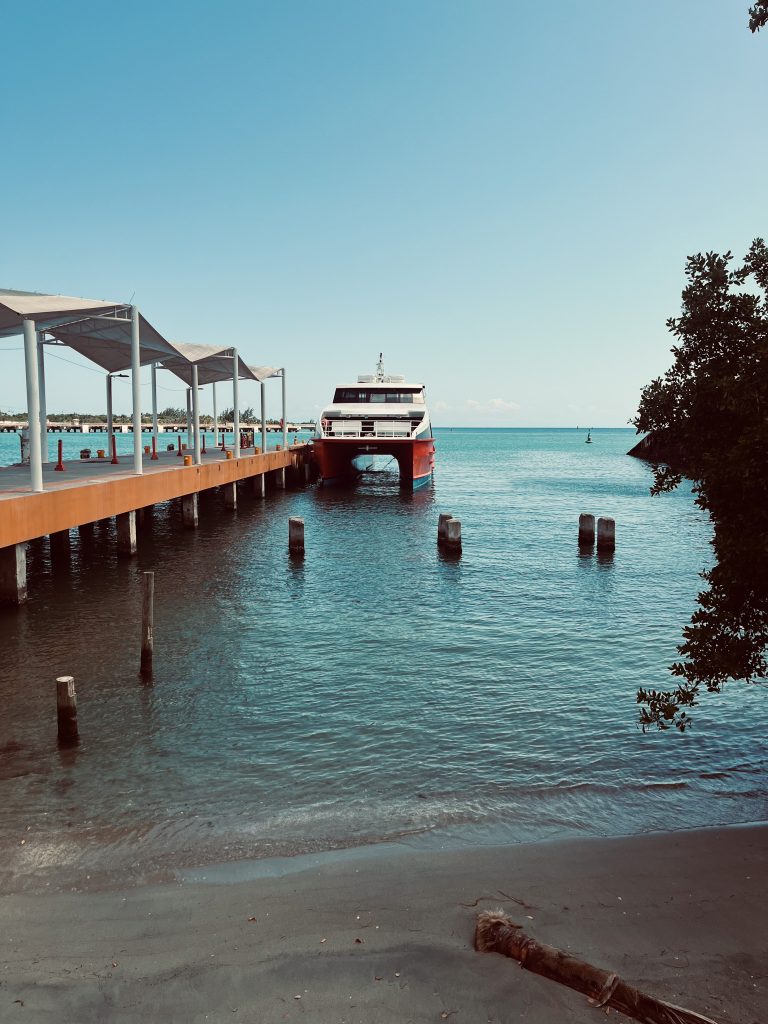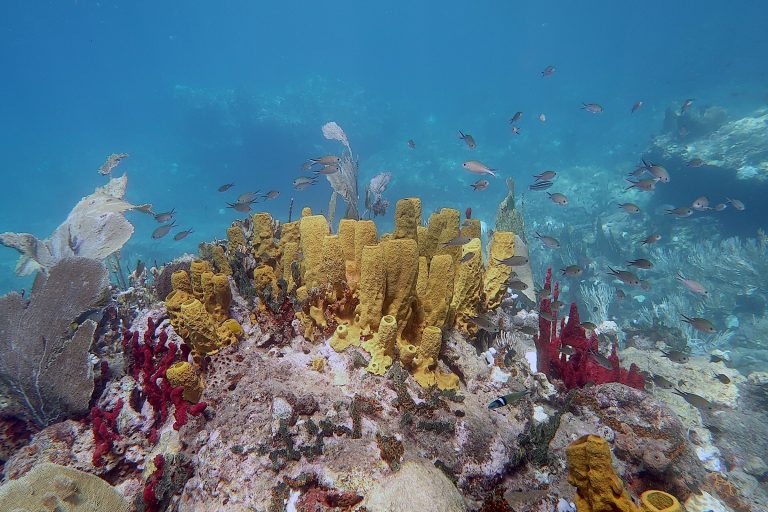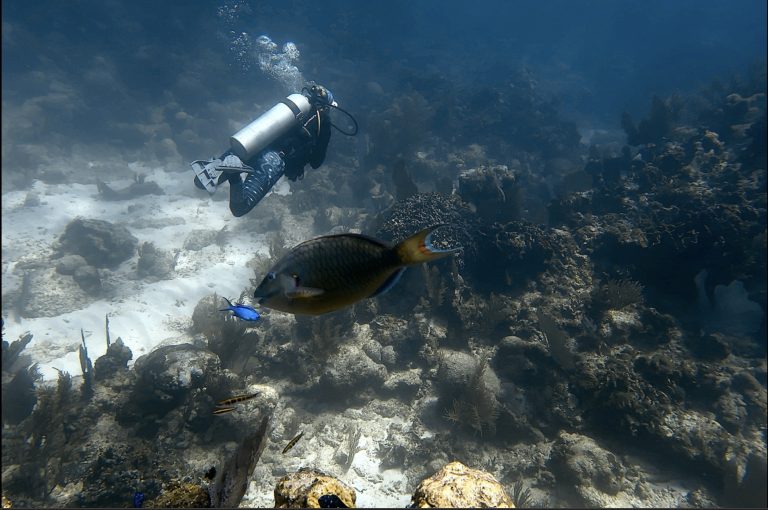How I Managed a Panic Attack While Diving : A Personal Experience
Safety first :
Please Read Before Continuing
This post shares my personal experience managing a panic attack while scuba diving. However, the safest—and most conservative—response is always to signal your buddy and make a controlled ascent if you feel overwhelmed.
• Never feel pressured to “push through” a panic attack underwater.
• If you feel you’re losing control, having trouble breathing, or are in an unsafe situation, abort the dive immediately.
• This post is not a substitute for professional training—if you struggle with anxiety while diving, consider speaking with an instructor or seeking medical support.
Why I stayed at 15m- even during a panic attack.
After a month of diving in Honduras, I found myself in an intense and unexpected situation. A group of around 20 divers had gathered for a lionfish hunt—a necessary conservation effort, but not something I had emotionally prepared for. Minutes into the dive, I witnessed the first strike. A lionfish was caught at the end of a spear, struggling, and dying. The image seared into my brain, and suddenly, panic surged through me. Everything I believe in—animal welfare, respect for marine life—was at odds with what I was witnessing. My body reacted before my mind could catch up. That was when my panic attack hit, deep at 15 metres. Despite the situation, I didn’t immediately recognise what was happening. This dive was about to be one of the most memorable of the month, starting with a giant hawksbill turtle resting just 10 metres away. For a few minutes, I was mesmerised, and my nervous system began to calm down. The group gathered around the turtle for a short while before the hunt began again. I wanted to stay there with the turtle forever; it felt safe and peaceful. But I also knew I couldn’t lose track of the group, so I reluctantly moved on. As I shifted to the back of the group, the scene became even more oppressive—the divers scouring crevices, the rows of spears, the strikes happening around me. My panic resurfaced quickly. My mind raced, repeating “I don’t like this.” I was very uncomfortable witnessing the lionfish being killed, even though it was a clean, ecological hunt. My animal welfare values were clashing with the reality in front of me. I was holding back tears, looking for an escape.
I needed to get out of this situation—I could no longer witness the hunt. I looked around: most divers seemed to be having fun, stalking, and hunting in groups, while filling their zookeepers with the day’s catch. I spotted a diver at the back who I had dived with this past month, they seemed to focus more on the corals and fish of the reef. At the same time, my instructor signed me to check in as she might have picked on my behaviour. I signalled her my discomfort about the hunt and soon enough, she paired me with this other diver to continue exploring the reef while the rest of the group resumed the activity. A few times, I questioned whether I should surface. But despite the emotional overwhelm, I still felt in control. Despite the panic, I knew I wasn’t acting erratically or endangering myself or others. I had tools I could use to regain control before deciding to abort the dive.
Once I was paired up with my buddy, we moved in closer to the reef and started looking for critters. I was still fighting tears, there was snot in my mask, and I had to clear it a few times. My breathing was fast, and I was sobbing but I knew that was the key. I had to regain control over my breathing to reset my nervous system and ironically, diving was the best place for it! I just had to find my way back to my breath, despite my brain throwing up flashes of the hunt, and the horror of it still sitting in my chest. My buddy kept calm, checking on me regularly. Simply knowing I had someone competent next to me was grounding. They pointed out little things—blennies nestled in coral, a lettuce slug sliding along the reef. And slowly, my focus shifted as I started spotting things too. My breath began to settle. I had definitely been breathing harder than usual. When I finally glanced at my gauge, I was surprised to notice I’d already used nearly half a tank. At that depth, that’s normally my air for a whole dive. It wasn’t a problem. Just a sign I’d been somewhere else for a while.
The dive kept giving—spotting a porcupine fish tucked under a rock, finding a new stem of the critically endangered Dendrogyra cylindrus, which our instructor geolocalised and flagged for BICA. It might sound nerdy, but it was a big moment for the GoEco crew! The icing on the cake was when a nurse shark came by to swim with us at the end of the dive, probably drawn to the scent of the full zookeepers. Overall, the whole dive was an emotional rollercoaster. So, I was happy to resurface to be able to check in. I don’t regret staying underwater and managing my panic attack in the moment. But looking back, while it felt like the right call then, I realise I might choose differently next time.
Once I resurfaced, I took 15-20 minutes to process what had happened. I was still a little shaky and the energy on the boat was heightened. Everyone was sharing their best hunt stories, and the zookeepers were full. I decided to go to the bow to check in with myself and continue with breathing exercises. The nervous system remains on high alert after a panic attack, and I needed time to regulate before making any further decisions. I debriefed with my instructor, who was incredibly supportive, giving me space to process and never pressuring me to dive again until I felt ready. To this date, I still believe that her acuity underwater and her ability to hold space with compassion on land were key to my success managing this situation.
1. Recognising the signs of a panic attack when scuba diving
Panic attacks manifest in different ways, but the signs I noticed included:
• Claustrophobia – Feeling trapped or unable to escape.
• Tunnel vision – Your focus narrows, and everything else blurs.
• Compulsive movements – For me, it’s rubbing my hands together.
• Feeling vulnerable or overwhelmed – Like everything is too much.
• Rapid or shallow breathing – Which can quickly spiral into hyperventilation.
Other signs can include dizziness, shaking, nausea, and muscular tension—all of which can seriously impair your ability to dive. If you want to read more about the causes of panic underwater, you can check this link for a more in-depth guide.
2. Assessing the situation : when to manage it vs. when to surface
Before deciding to stay underwater, I ran through a mental checklist. These were the factors that told me I might be able to manage it:
- I recognised the signs. I’ve had panic attacks on land before so the symptoms were familiar.
- I was with people I trusted. The group included experienced divemasters and instructors I’d been diving with for weeks. I knew they could be trusted to manage this situation safely.
- My instructor was already watching me. She’d picked up on my behaviour, checked in, and made the call to remove me from the hunt. I wasn’t alone in this.
- The trigger was clear. It wasn’t the depth or my gear—it was the hunt itself. And now I was away from it.
- I relied on my experience. I’m a self-aware person and a trained diver, and throughout the event, I felt capable of handling myself. I wasn’t spiralling or endangering anyone. I was uncomfortable, but calm enough to make decisions.
3. The tools to regain control & stay safe
• The buddy system.
Once underwater, the buddy system should never be underestimated. If your buddy is competent and you communicate effectively, it surely is your best chance of a positive outcome in case of an emergency. Even if it was my own an internal struggle to regain control over my nervous system, having someone who has your back makes all the difference. From that point on, I was diving closely with my buddy who was aware of the issue.
• Breathing regulation
The most essential thing is to regain control of your breathing. Slow, deep exhales tell the brain that things are safe and help regulate the nervous system.
• Grounding through focus (instead of hyper-focusing on panic)
On land, a common anxiety trick is “name 10 things in the room” to shift focus. That doesn’t work in the vast ocean. Underwater, my buddy and I searched for microfauna—like tiny blennies hiding in coral polyps. This gave me something small, detailed, and fascinating to focus on rather than the overwhelming panic.
• Monitoring air consumption
Panic increases air consumption significantly. Breathing becomes shallow and fast, which burns through your tank much faster than usual. It’s crucial to check your air gauge more frequently than normal to ensure you don’t run low unexpectedly.
· It’s okay to change your mind
Just because I chose to try and calm myself underwater didn’t mean I was locked into that decision. If, after trying to regain control, I had felt my distress worsen, I would have signalled my buddy and surfaced immediately. There’s no shame in choosing safety. No dive is worth risking your life.
4. After the dive : processing & recovery
Once I resurfaced, I took 15-20 minutes to:
- Process what had happened.
- Continue with breathing exercises.
- Check in with myself and my emotions.
- Reflect on what values had been triggered.
- Check in with my instructor to assess if I was ready to go back diving.
- Make the decision to go for a second dive, without any pressure, but because I felt ready.
5. Final thoughts : safety first, always
I was lucky. I had the tools, training, and support to manage my panic attack underwater. But not every diver will have that same combination of factors. Handling a panic attack while scuba diving is a delicate balance—pushing through just enough, but never at the cost of your safety or mental state.
Every diver’s experience is different, and only you can decide what feels right in the moment. If you feel unsafe, signal your buddy and make a controlled ascent. No dive is worth your life. If you’re in a place where you can slow down and regain control, some of the tools I used might help. But always listen to your body. It’s okay to change your mind.







